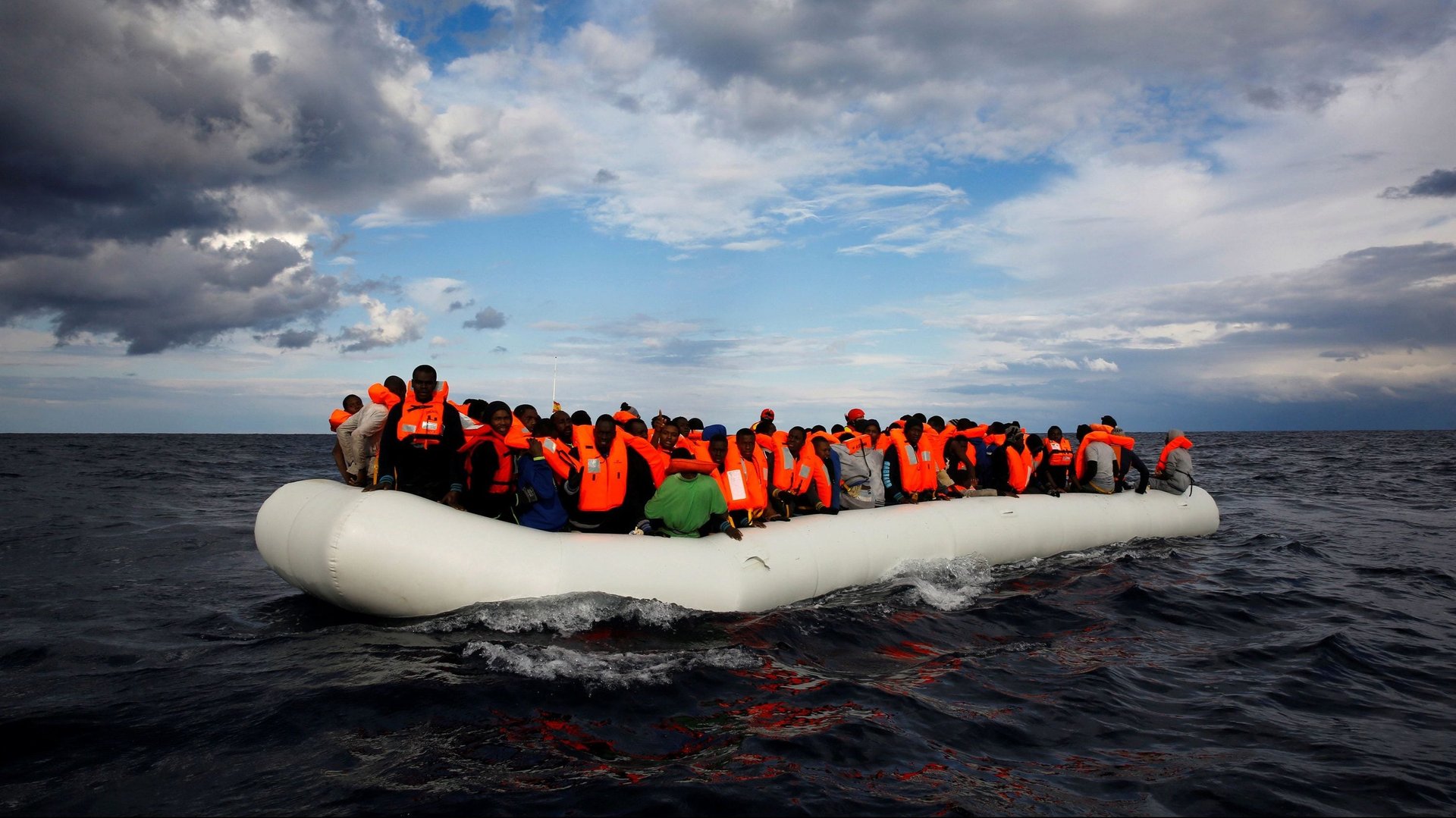The drop in migrants dying in the Mediterranean hides a disturbing reality
The UN Refugee Agency recently released its 2018 tally for migrant journeys across the Mediterranean. 2,262 people died or went missing last year attempting the crossing, a 28% drop since 2017. But that welcome stat masks a disturbing trend—record rates are dying at sea.


The UN Refugee Agency recently released its 2018 tally for migrant journeys across the Mediterranean. 2,262 people died or went missing last year attempting the crossing, a 28% drop since 2017. But that welcome stat masks a disturbing trend—record rates are dying at sea.
Far fewer migrants are making the journey in the first place, and that’s what’s driving the decline. About 115,000 migrants landed in Europe last year, down from 172,000 the year before that, and further still dwarfed by the more than 1 million who arrived by sea in 2015 (3,771 died or went missing that year).
Traditionally, migrants could take one of three sea passages to Europe—the western, central, or eastern Mediterranean route. The vast majority of 2015’s migrants took the eastern route, but a 2016 deal, which saw Turkey get billions in aid as well as political concessions from the EU in return for taking back migrants who landed in Greece, mostly closed off that path.
The central Mediterranean route then became the most popular sea entry point. Migrants, largely from sub-Saharan Africa, journey to war-torn Libya in an attempt to reach Italy.
Overall deaths declined in 2018 because, in addition to the number of migrant journeys decreasing, the numbers taking the more dangerous central Mediterranean route have plunged. Most migrants arrived last year via the western Mediterranean instead, with some 64,000 landing in Spain. Italy, by comparison, received 23,000, down five-fold from 119,000 in 2017.
More than 1,300 died last year taking the central Mediterranean route. Put another way, that’s nearly six out of every 100 journeys.
One reason the central Mediterranean route has become increasingly hazardous is due to traffickers being forced to take more risks, “because there is more surveillance exercised by the Libyan coastguards,” Vincent Cochetel, the UNHCR’s special envoy for the central Mediterranean, told The Guardian in September.
Italy struck a deal with African countries including Libya in February 2017 to bolster their security forces in return for money, with the goal of blocking key departure points. €200 million ($228 million) was pledged for the effort.
NGO Médecins Sans Frontières also ceased operations for its rescue ship Aquarius in December, a month after Italian authorities had ordered its seizure amid a campaign targeting charity vessels. Aquarius had assisted nearly 30,000 people at sea since 2016, and was the last ship of its kind in the Mediterranean.